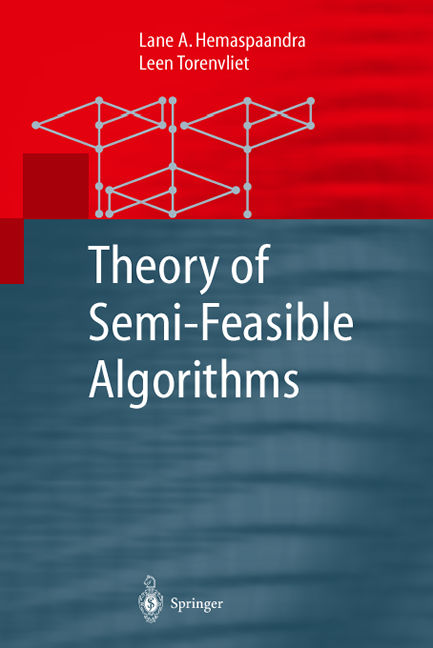Publisher's Blurb
List of Chapters
Preface, Table of Contents, and the Index
Order From Amazon
Publisher's Catalog Entry
How to Get A Desk Copy From The Publisher
Errata
This book presents a consolidated survey of the vibrant field of
research known as the theory of semi-feasible algorithms. This
research stream perfectly showcases the richness of, and contrasts
between, the central notions of complexity: running time, nonuniform
complexity, lowness, and NP-hardness. Research into semi-feasible
computation has already developed a rich set of tools, yet is young
enough to have an abundance of fresh, open issues.
Being essentially self-contained, the book requires neither great
mathematical maturity nor an extensive background in computational
complexity theory or in computer science in general. Newcomers are
introduced to the field systematically and guided to the frontiers of
current research. Researchers already active in the field will
appreciate the book as a valuable source of reference.
Preface.
Introduction to Semi-Feasible Computation.
Advice.
Lowness.
Hardness for Complexity Classes.
Closures.
Generalizations and Related Notions.
Definitions of Reductions and Complexity Classes, and Notation List.
References.
Index.
If you are in North America
and are seriously interested
in possibly using the book as a course text,
you can request
a desk copy from Mike Spano of Springer-New-York
(MSPANO@springer-ny.com).
If you are outside of North America
and are seriously interested
in possibly using the book as a course text,
you can request
a desk copy from Ingeborg Mayer of Springer-Germany
(I.Mayer@Springer.de).
The book is relased and available.
Return to Top of Page
